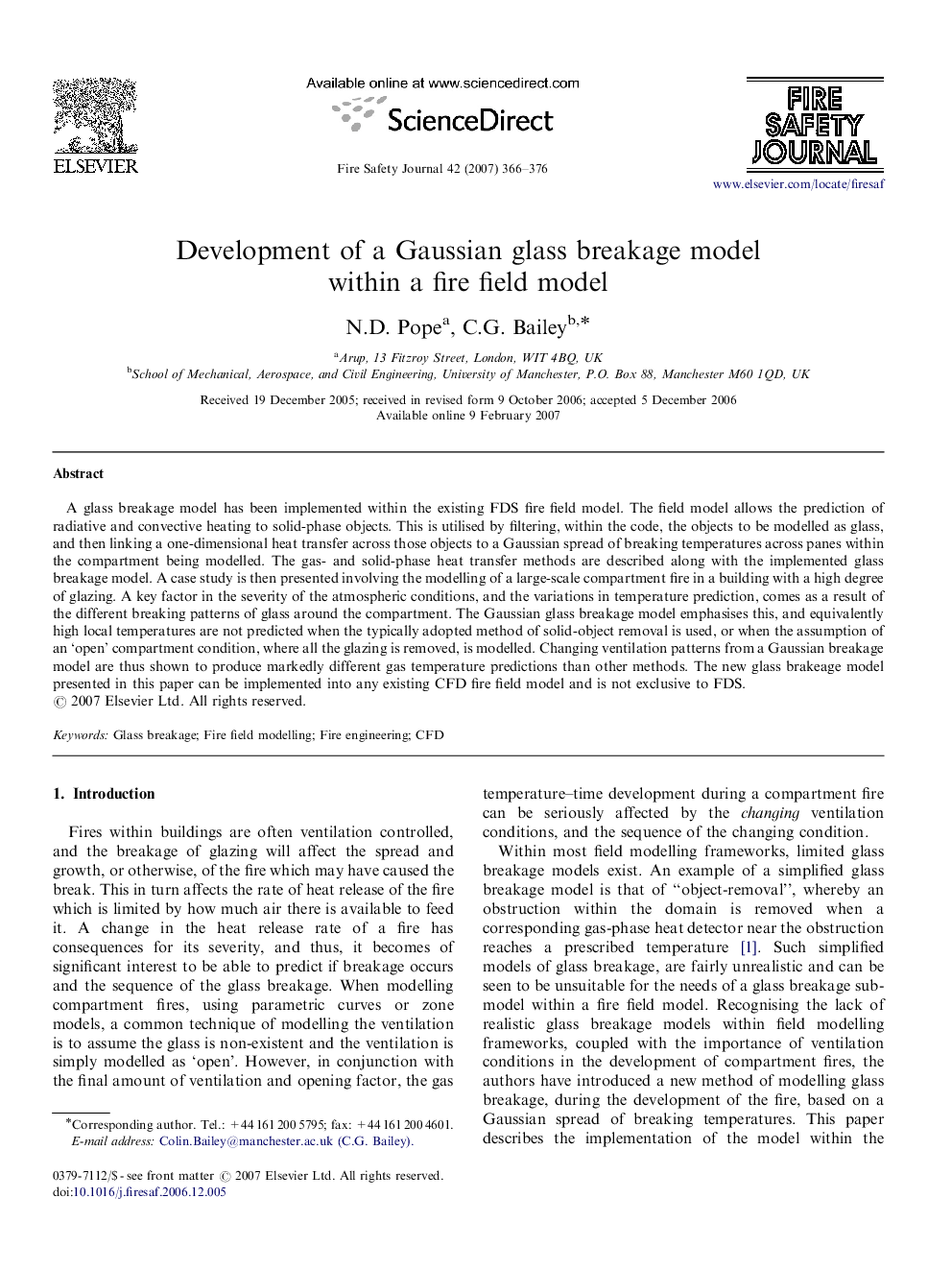| Article ID | Journal | Published Year | Pages | File Type |
|---|---|---|---|---|
| 270593 | Fire Safety Journal | 2007 | 11 Pages |
A glass breakage model has been implemented within the existing FDS fire field model. The field model allows the prediction of radiative and convective heating to solid-phase objects. This is utilised by filtering, within the code, the objects to be modelled as glass, and then linking a one-dimensional heat transfer across those objects to a Gaussian spread of breaking temperatures across panes within the compartment being modelled. The gas- and solid-phase heat transfer methods are described along with the implemented glass breakage model. A case study is then presented involving the modelling of a large-scale compartment fire in a building with a high degree of glazing. A key factor in the severity of the atmospheric conditions, and the variations in temperature prediction, comes as a result of the different breaking patterns of glass around the compartment. The Gaussian glass breakage model emphasises this, and equivalently high local temperatures are not predicted when the typically adopted method of solid-object removal is used, or when the assumption of an ‘open’ compartment condition, where all the glazing is removed, is modelled. Changing ventilation patterns from a Gaussian breakage model are thus shown to produce markedly different gas temperature predictions than other methods. The new glass brakeage model presented in this paper can be implemented into any existing CFD fire field model and is not exclusive to FDS.
